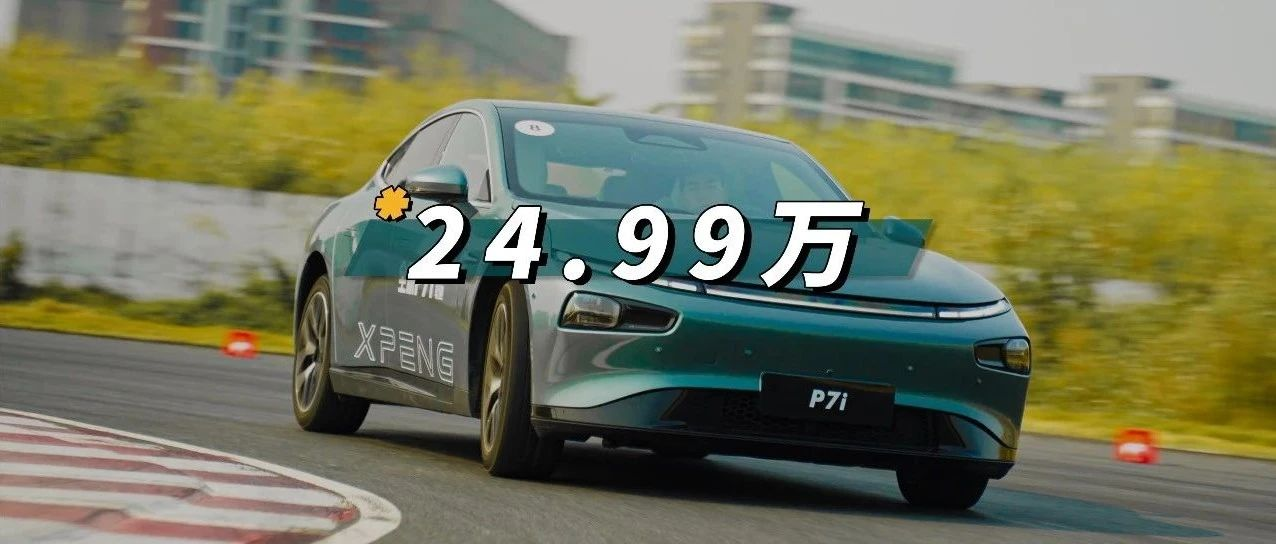Author: I Xiao Wei
Editor: Chris
Today, XPeng unveiled the all-new P7i, which is the upgraded version of the most successful model, P7 since the establishment of XPeng. In this period of low sales for XPeng, P7i is the “hope of the village” for XPeng. Can it once again lift XPeng’s sales?
First, let’s look at the prices:
The rear-wheel-drive model has a range of 702 kilometers, a maximum power of 203 kW, a maximum torque of 440 N∙m, and a 0-100 acceleration of 6.4 seconds. The Pro version is priced at 249,900 yuan, and the Max version is priced at 269,900 yuan.
The four-wheel-drive model has a range of 610 kilometers, a maximum power of 348 kW, a maximum torque of 757 N∙m, and a 0-100 acceleration of 3.9 seconds. The Max version is priced at 289,900 yuan.
The Pengyi version is priced at 339,900 yuan and adds CDC electromagnetic shock absorbers, Denon sound systems, and Pengyi doors to the four-wheel-drive Max version.
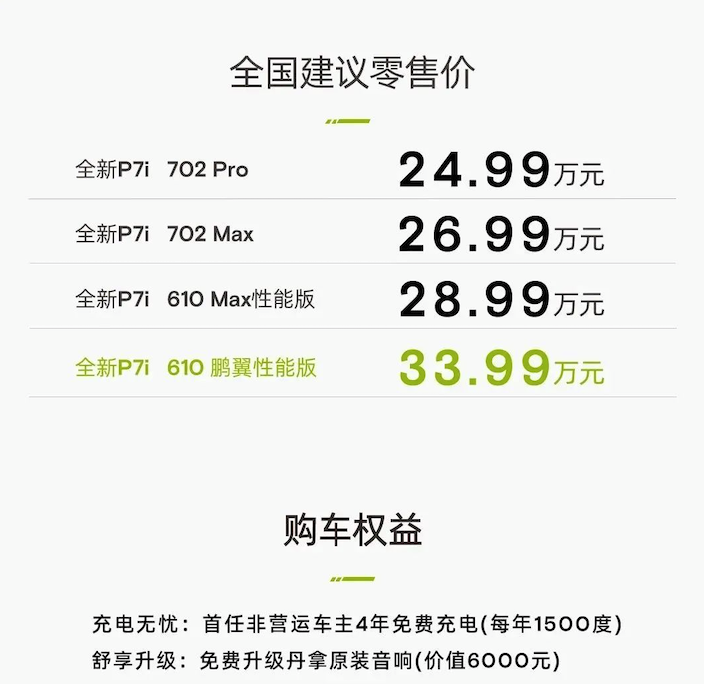
P7i’s battery pack comes in only one version of 86.2 degrees, and the supplier has been changed from Ningde Times to AVIC Lithium. Users no longer need to agonize over multiple ranges like they did with P7.
The Pro and Max versions represent different levels of intelligent driving hardware and capabilities. The Pro version does not have a lidar and only has one Orin-X chip, while the Max version has two lidars and two Orin-X chips, allowing the Max version to achieve urban navigation-assisted driving, while the Pro version’s navigation-assisted driving capability can only be used on highways and overpasses.
Therefore, when choosing configurations, users only need to choose performance and intelligent driving capabilities, which is much better than the embarrassing situation of not being able to understand the configuration table after the G9 release.
In addition, P7i comes standard with a 7.1.4 panoramic sound system with 20 speakers, electric suction doors, Nappa leather seats, and seat ventilation/heating. The optional 6,000 yuan Denon sound system is now available for a limited time for free. In 2023, without these configurations, you’d be ashamed to show off in the many competing malls.
 Compared to its rivals, the P7i Pro version is only two thousand yuan more expensive than the Tesla Model 3, but it has better range, features, and autonomous driving capabilities than the Model 3, which will soon have major updates and is without FSD Beta.
Compared to its rivals, the P7i Pro version is only two thousand yuan more expensive than the Tesla Model 3, but it has better range, features, and autonomous driving capabilities than the Model 3, which will soon have major updates and is without FSD Beta.
In comparison to the Sea Lion, the 550 km version with heated and ventilated seats is priced at 225,800 yuan, and there is currently an 8,888 yuan discount, but the P7i Pro has obvious advantages in range and intelligent level. The Sea Lion 700 km rear-wheel drive version with similar range to the P7i Pro is priced at 262,800 yuan, and even with the discount, it is still 5,000 yuan more expensive than the P7i.
For an extra 20,000 yuan on the Pro version, you can get the Max version’s city navigation assistance driving capabilities. The price difference is not huge, but it can give you an advanced driving assistance experience that will not become outdated for several years. The four-wheel drive Max version is 40,000 yuan cheaper than the Model 3 Performance and NIO ET5.
However, this year’s car market can be described as “fierce”. Not only are electric cars being offered at reduced prices, but gasoline cars are also seeing significant price cuts. Therefore, pricing for new products is crucial. Looking only at the starting price of the P7i, 249,900 yuan is not cheap. This is also the reason why many netizens hope that P7i can release a lower battery capacity version to lower the price threshold.
However, the good news is that almost no one thinks that the current configuration is not worth the price. In other words, everyone recognizes the current price-performance ratio, but they are just “angry” that there is no more entry-level version. This is good news for XPeng, and more consumers will be aware of this when comparing among multiple models in the future.
But they may ask, what has changed in the P7i? The following will provide a detailed introduction.
“Minor surface changes”
In terms of appearance, there are no obvious changes to the P7i. The newly added lidar is placed in the headlight position, and the design is much better than that of its competitors with a bulky lidar on top.

The body size has only increased by 8mm in length, so you won’t notice the difference. The shape of the taillights has changed, and the addition of a physical button above the license plate for opening the tailgate is a change made based on feedback from P7 owners.
The high EQ statement inherits the classic and pure coupe style of P7, while the low EQ statement is that the new model cannot be distinguished from the old one from the appearance.
However, this time, XPeng added a new car paint for P7i, especially this “interstellar green”, which is both durable and unique, and also suitable for the sci-fi appearance of P7i.
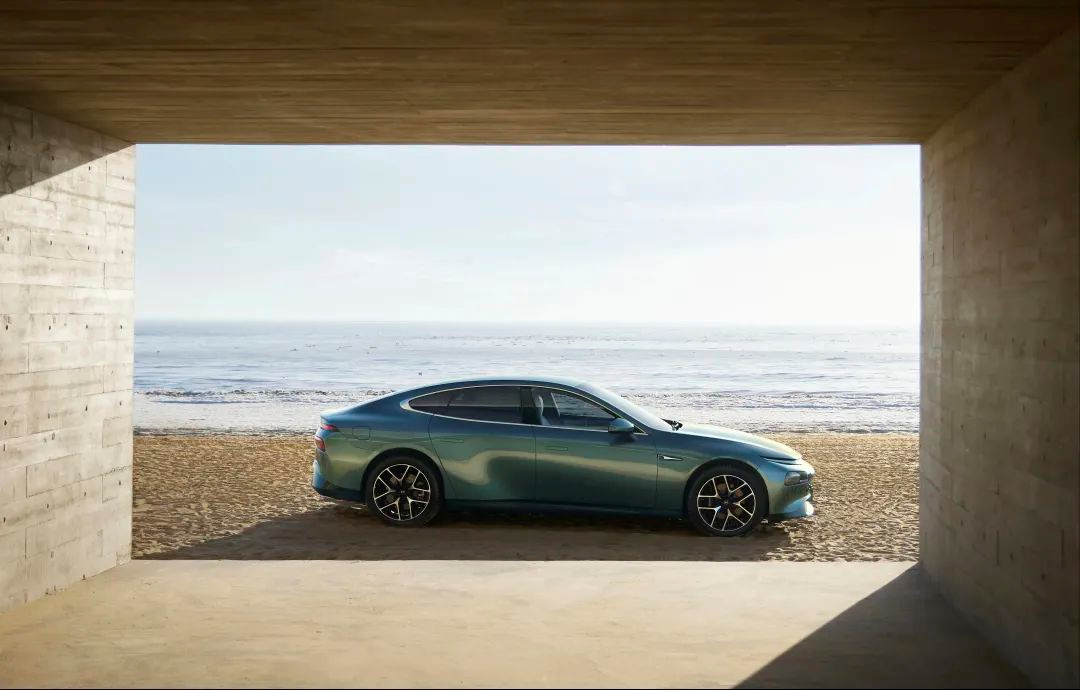
P7i also added a gray interior. Light-colored interiors can bring a better sense of luxury, and gray is more dirt-resistant than white. In addition, there are also red and black to choose from.

The wheel has a new design, but the coolness of the 19-inch sporty wheel needs to sacrifice 30 kilometers of endurance and 6,000 yuan.
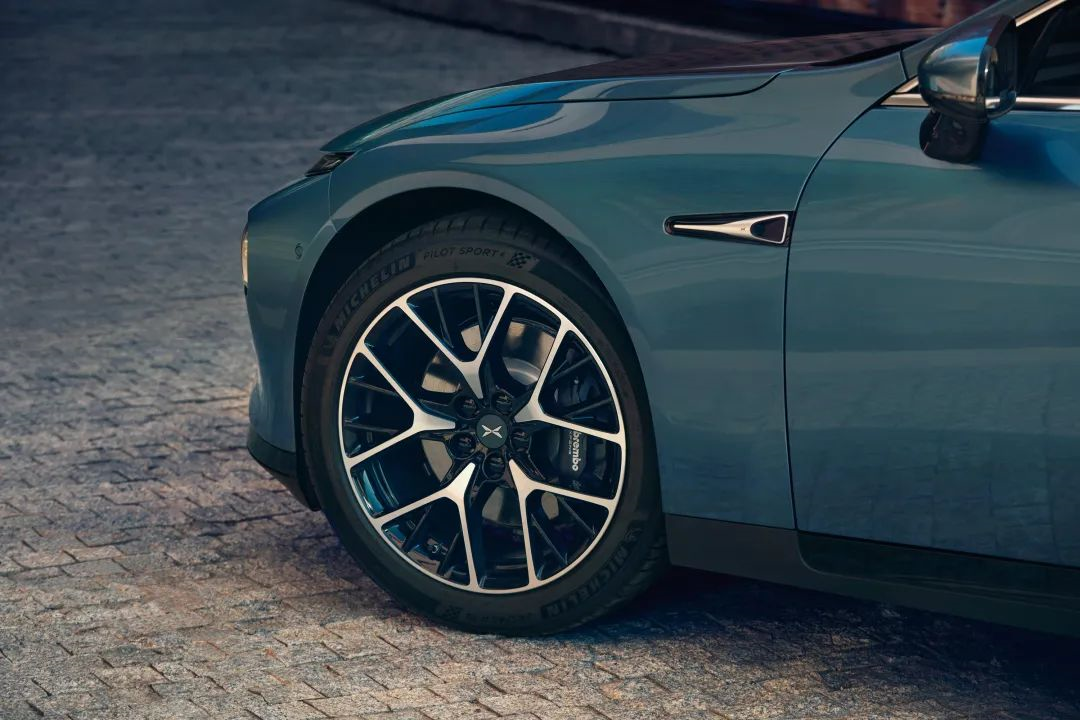
The most obvious change in P7i’s interior is the steering wheel and central control panel. The steering wheel has been replaced with the G9 version. The new steering wheel has improved in function and practicality, but there is still room for improvement in visual design.
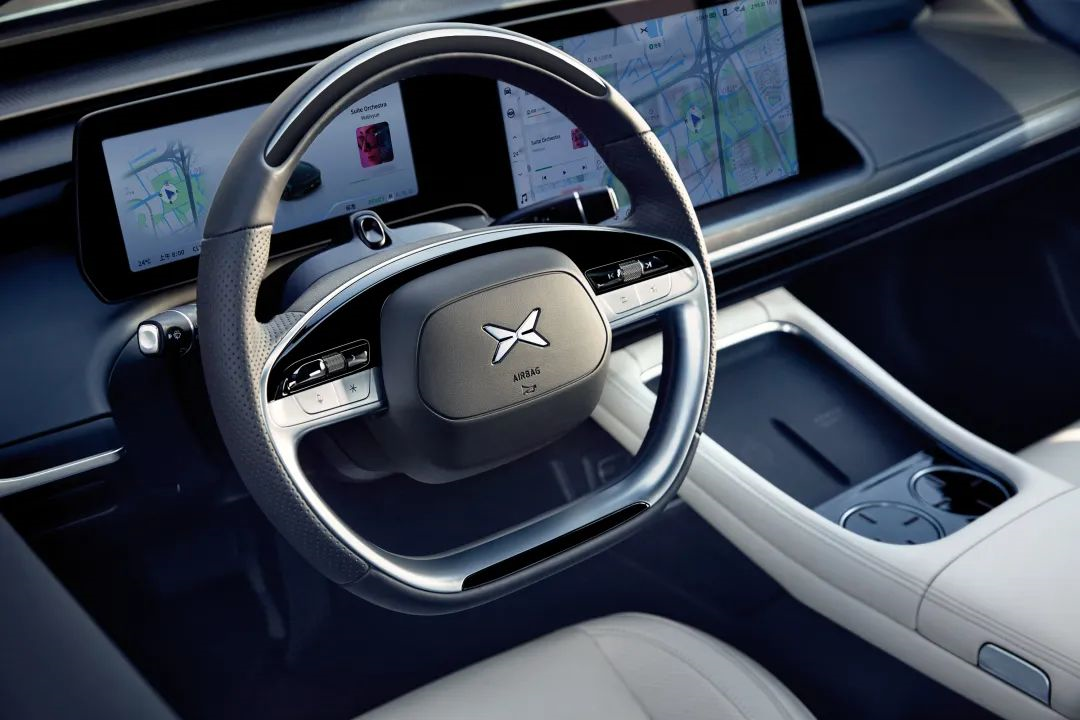
On the redesigned central control panel, the wireless charging board has been changed from horizontal to vertical. Unfortunately, P7i only provides a 15W charging board and does not have air-cooling, so the right side cannot be charged. The car owner needs to explain to friends and family sitting in the passenger seat. Fortunately, the P7i central control’s dig-out storage space is equipped with 60W Type-C and USB ports to meet charging needs.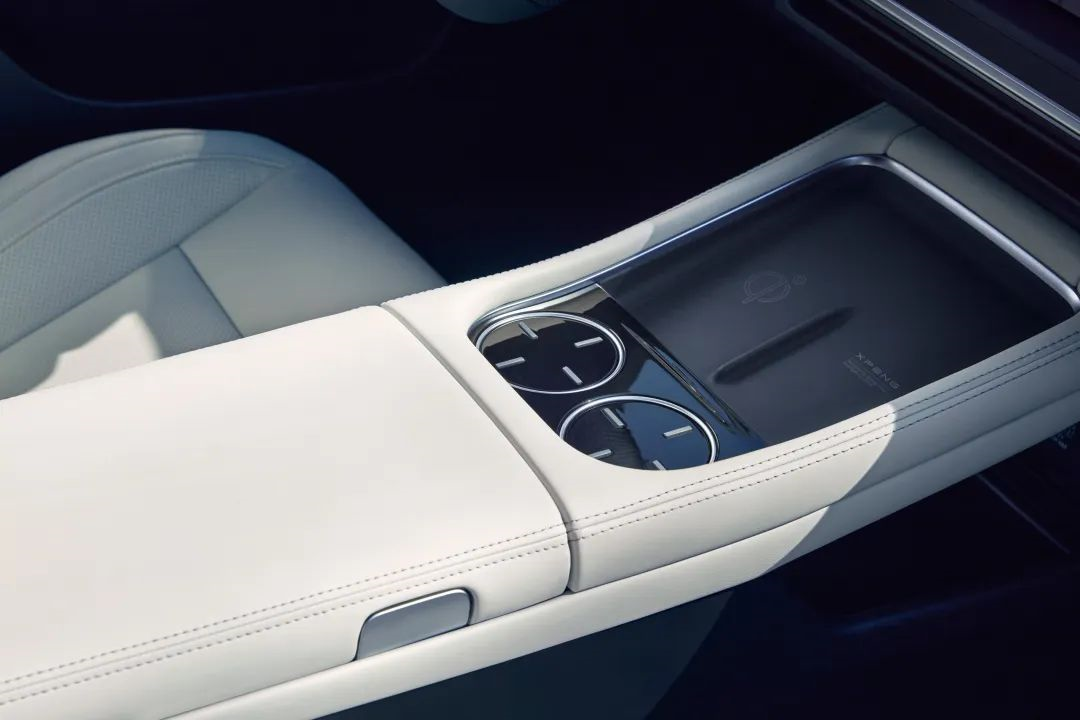
In terms of the seats, the overall support and wrapping of the front seats have been improved, and the length of the rear seat cushion has increased by 25 mm, while the backrest angle has been optimized by 1°. Compared with the P7, the comfort of the rear seats has been improved, the legroom is still sufficient, and the headroom is still a bit cramped, but overall it meets the space requirements of a midsize sedan.
The only “negative optimization” of the entire car is that the P7i has canceled the front trunk of the P7. It is speculated that the new thermal management assembly takes up a lot of space, so the front trunk was sacrificed, but the energy-saving brought about by this would make the owners feel it is worthwhile.
Looking at it this way, the surface upgrade of the Xpeng P7i is not significant, but the internal upgrade to be discussed is certainly substantial.
“Internal Transfiguration”
More Intelligent Cockpit
Xpeng officially explains the “i” in P7i as intelligence. In fact, the intelligence of the P7 is already quite good and even stronger than some competitors, so what progress has been made with the P7i?
Firstly, the cockpit hardware has been upgraded from the Qualcomm Snapdragon 820A chip to the 8155 chip, with a three-fold increase in computing power. Xpeng has already optimized the 820A very smoothly, but the in-car system response of the 8155 chip is visibly faster.
Under Xpeng’s Xmart OS 4.0 system, the P7i, like the G9, is equipped with Xpeng’s industry-first all-vehicle voice system that can simultaneously receive and execute commands from four passengers without having to say a wake-up word before giving orders.
Unfortunately, the front row did not add the co-driver screen on the G9, but considering the price, it is acceptable.
This is just an appetizer for the upgraded intelligence of the P7i. The main course is the advanced driving assistance system.
More Advanced Intelligent Driving
If you choose the Max version, you can experience the industry’s first full-scene intelligent driving assistance on the P7i, which means you can use the high-level intelligent driving assistance from one parking space to another, from P gear to P gear, throughout the journey.
To achieve this, both the hardware and software have been upgraded.The assisted driving chip of XPeng Motors has been upgraded from NVIDIA Xavier to two NVIDIA Orin-X chips, increasing the computing power from 30 TOPS to 508 TOPS. The three 1.7 million pixel front cameras have been replaced by two 8 million pixel front cameras.
In addition, two more LiDARs have been added, along with 12 ultrasonic radars, 5 millimeter-wave radars, 4 panoramic cameras, 2 front-side cameras, 2 rear-side cameras, 1 rearview camera, and 1 in-car fatigue monitoring camera.
This is XPeng’s second-generation visual perception architecture, equipped with XNet deep visual neural network that achieves stronger environmental perception capabilities. Combined with XPeng’s self-developed BEV perception algorithm, XPeng’s intelligent driving capabilities are reaching new heights.
At the end of this month, owners of XPeng P7i Max and G9 Max can use the city navigation assisted driving function with high-precision maps in Guangzhou, Shenzhen, and Shanghai. In all other cities without maps, XPeng will open up the ability to recognize traffic lights and drive straight through intersections, and most cities without maps will have the ability to change lanes, overtake, and turn left/right.
This year, XPeng’s city navigation assisted driving will move beyond high-precision maps to cover 50-100 cities in China. By 2024, XPeng aims to gradually achieve seamless integration of driving and parking functions, forming a complete point-to-point intelligent navigation assisted driving system.
In the eyes of Ideal ONE’s founder Li Xiang, by 2024, if mid-to-high-end vehicles can’t provide city navigation assistance, it will affect consumer buying decisions. As early as the beginning of 2023, choosing the XPeng P7i Max will at least keep you up to date for several years.
We will become the generation witnessing the transformation from assisted driving to self-driving. Will the joy of control and driving pleasure disappear when cars can drive themselves? At least not on the XPeng P7i.
More Extreme Control
The front double-wishbone and rear five-link suspension of XPeng P7’s chassis, along with sporty tuning, provides good handling and driving pleasure for the single-motor rear-wheel drive version. The front four-piston Brembo calipers and four-wheel Brembo brake discs allow the P7i to achieve the shortest braking distance of 33.3 meters in its segment. This is enough to enjoy driving pleasure in city and highway scenarios, but on the racetrack, the P7i’s four-wheel drive version can lead you into another world.
The P7i’s four-wheel drive version has a maximum power of 348 kW and a maximum torque of 757 N·m. This is a 32 kW increase in power and a 102 N·m increase in torque from the P7’s four-wheel drive version, which uses a combination of front asynchronous AC motor and rear permanent magnet motor instead of two permanent magnet motors. When extreme performance is not required, the front motor can be disconnected, and the four-wheel drive can become rear-wheel drive to improve driving range.The P7i motor has a unique layout, using a mid-mounted motor configuration. The front motor is placed behind the front axle, and the rear motor is placed in front of the rear axle. In theory, the weight distribution is more centralized with a battery laid flat on the chassis, which helps with handling.
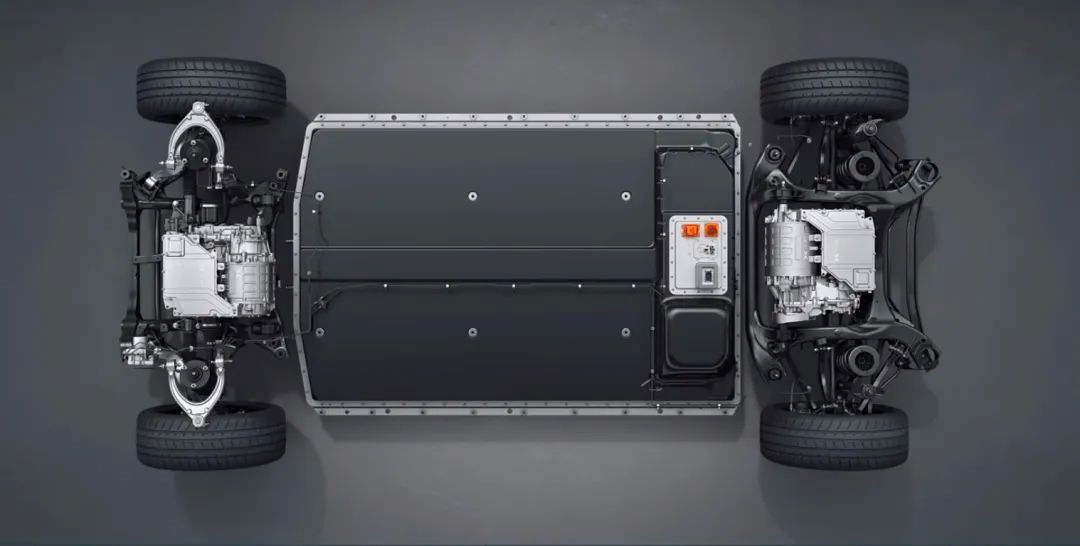
In addition to the 3.9-second 0-100 km/h acceleration, the reason to buy the four-wheel-drive version of the P7i is the driver mode. The braking and throttle of the driver mode are more linear, making the car easier to control. The ESP interference is delayed, and the thermal management system works in overdrive to help dissipate heat. The dashboard not only displays the speed but also the G value and torque. With the intelligent four-wheel drive torque distribution system of the P7i, the software improves handling.
Cars that pursue handling often correspond to “bumpy” and “hard”. The P7i is ultimately a car that aims for volume, so the chassis has been specifically calibrated for Chinese road conditions, balancing handling and comfort.
More Solid Endurance
The P7i’s architecture is still 400V, and it is unfortunate that it does not use 800V. Thankfully, the P7i’s charging current has been increased from 250A to 500A, and the maximum charging power has been increased from 87kW to 183kW. The fastest charging time from 10% to 80% is only 29 minutes, and a 10-minute charge can give you 240km of range.
However, most third-party charging stations currently have a maximum current of 250A, so achieving the fastest charging speed may only be possible on XPeng’s own charging stations.
The addition of the heat pump air conditioning is an unseen but significant improvement of the P7i.
In winter, the heat pump can absorb heat from heating elements such as the environment, motor, battery, domain controllers, and automatic driving computers throughout the car, intelligently transfer energy to the areas that need heating the most, and minimize heat loss, achieving a quick warm-up while being energy-efficient. In 0℃ weather, the P7i’s heating energy consumption decreases by 35%, and winter range can be increased by 15%.
The P7’s virtual range at its launch was criticized, but it did not affect its subsequent popularity. This improvement may not be critical, but it makes up for one of the P7’s obvious weaknesses, and gives the user a significant experience.### Final Words
To sum up, the XPeng P7i retains the advantages of the P7, makes up for its shortcomings, and enhances the already leading level of intelligence. Combined with a competitive price, this is a product with strong performance and good value for money in the smart electric car industry.
As for whether it can boost XPeng’s sales, we will wait and see.
This article is a translation by ChatGPT of a Chinese report from 42HOW. If you have any questions about it, please email bd@42how.com.
